allen hansrisuk
🔙Ready, Fresh, Go!
Case study and value proposition for a food truck business model and app intended to address food deserts and build community.
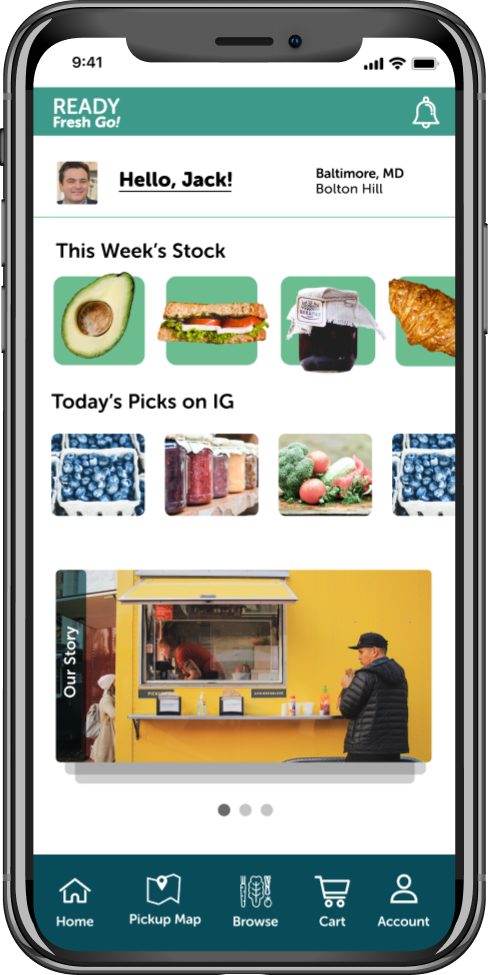
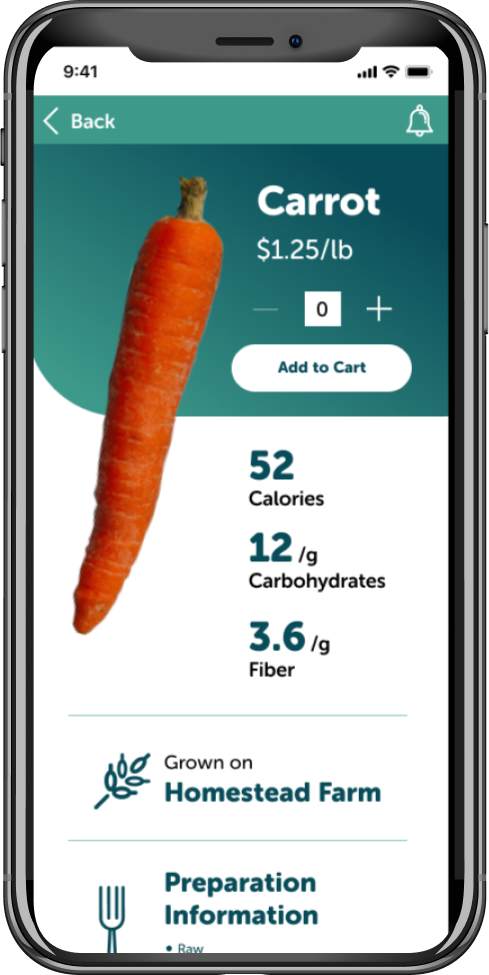
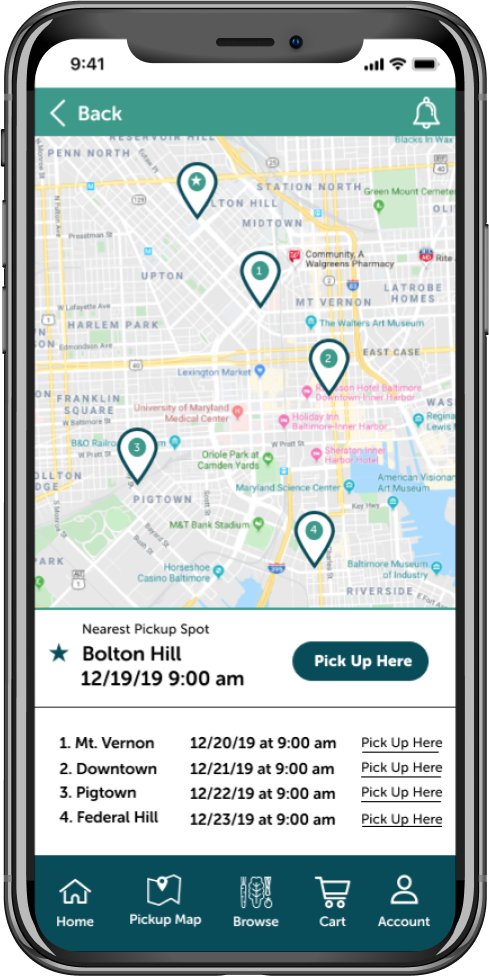
Background/Problem
Food deserts in the United States is often an overlooked issue that has tremendeous effects on citizens' diets and health. In Michelle Obama’s speech in 2010 as part of her Let's Move! campaign, she covered issues including child health and nutrition. She also addressed "23.5 million Americans who live in areas without supermarkets or other places where they can access fresh, nutritious foods". As a result, Americans who live in these areas are more susceptible to diet related illnesses and poor habits relating to nutrition.
Our team was tasked with exploring a potential solution that could address food deserts and build community. Our final deliverable to the client was a complete playbook documenting our process, design decisions, wireframes, and prototype.
Project Timeline
Our project spanned six weeks and we followed the Agile Scrum method to prioritize our tasks and divide the work.
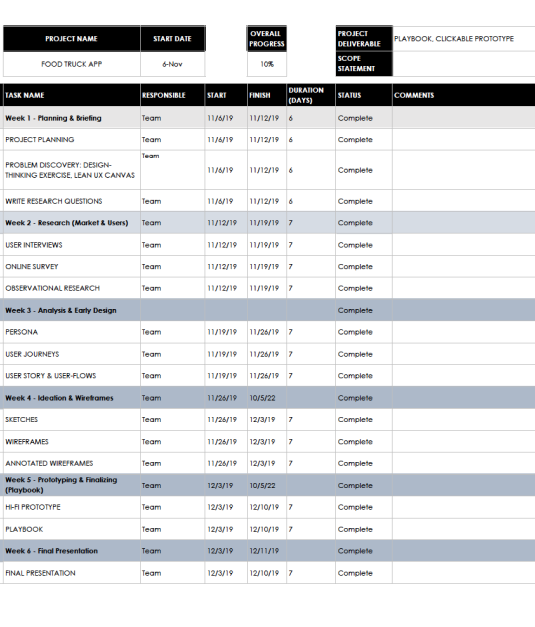
Research
We started researching this issue through peer reviewed journal articles to better understand what criteria makes an area a food desert as well as what known problems do people in these areas already encounter. Although the main demographic we were targeting were users who live in food deserts, we wanted to open up our research to all users in order to understand their grocery shopping and eating habits. This was done via online survey and eight survey responders were contacted for a follow up interview.
Key Takeaways
- Most participants expressed pain points with grocery shopping and food-ordering or takeout methods.
- Some participants resort to online ordering for grocery shopping when they couldn’t find what they’re looking for and that 5 out of 8 participants use food-delivery apps to get their food (takeout).
- Most participants prefer to go to the closest grocery store (additional or secondary reasons: quality and cultural preference). For those who own a car, they’re willing to drive further to go to another store.
- Most participants are health conscious, meaning they aware of what they eat and try to eat healthier options. Some participants also follow dietary plans (low-carb, vegetarian).
Persona and Journey Map
Jack Karter was one of the personas created based on our research data to illustrate a potential user and their journey through buying food.

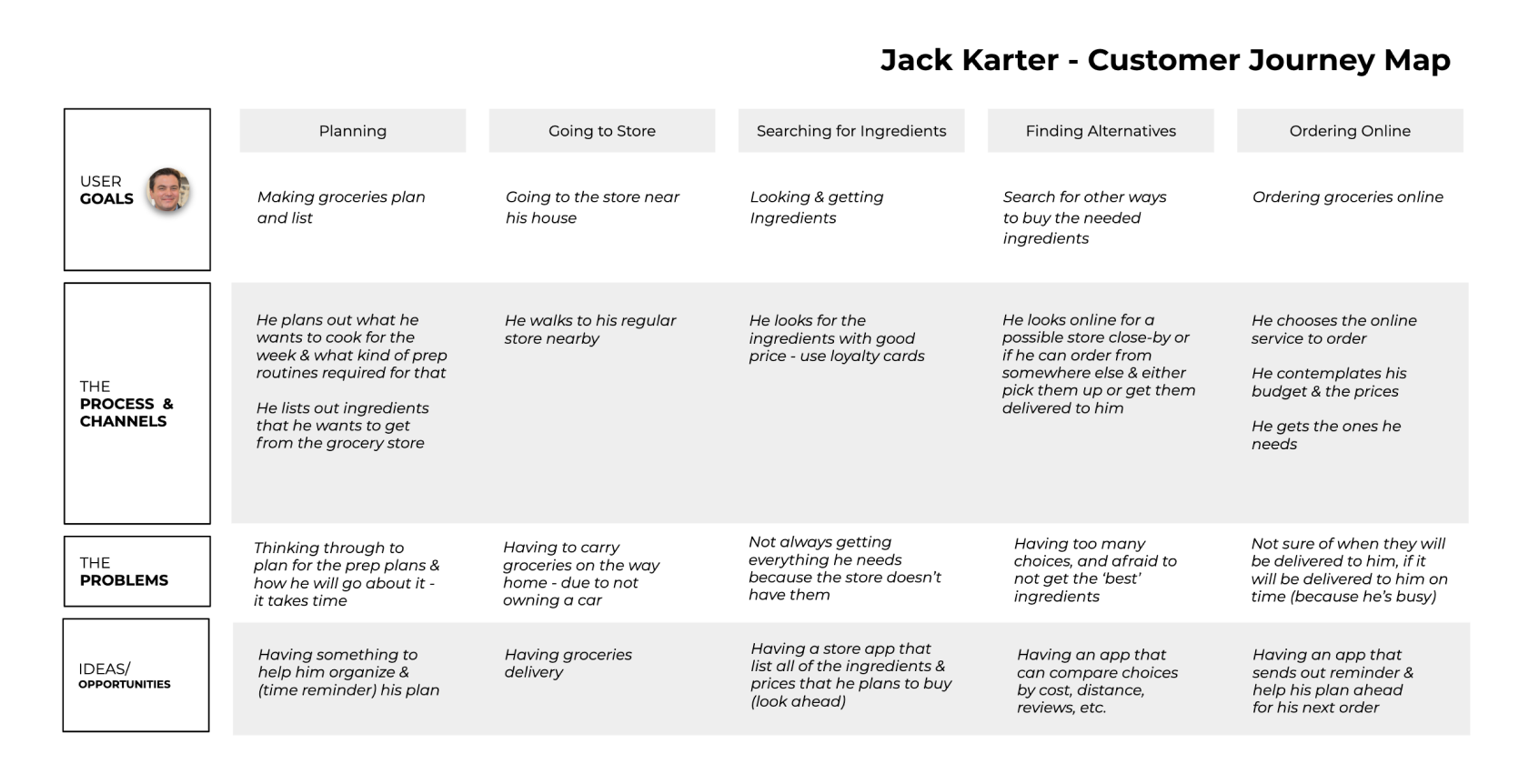
Solution/Task Flow
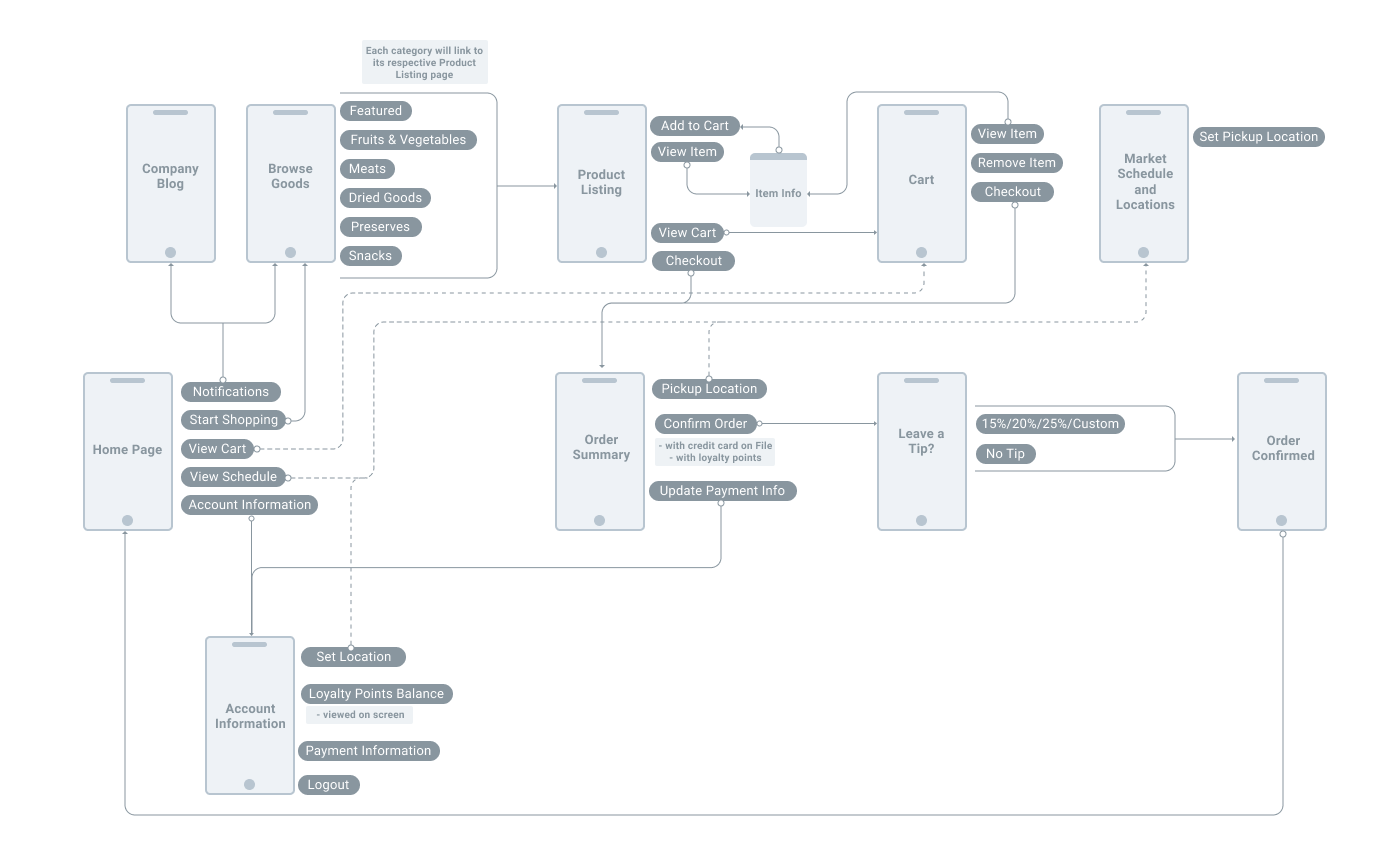
Our solution, Ready, Fresh, Go! is a two-pronged approach. To build community and help address the food desert issue, the solution makes use of a traveling farmer’s market, similar to a traditional food truck, that travels from neighborhood to neighborhood on a recurring schedule. Each neighborhood has its associated time and place where the market will be. Good sold will come from local sources furthe strengthening community ties. The second part of our solution lies in the accompanying mobile app. From the app, users can set their default pickup location, order their groceries, see what the market has in store, and pay. The task flow (pictured above) outlined the features and the users’ processes for our app. Later, we designed the wireframes, which later on informed our prototype.
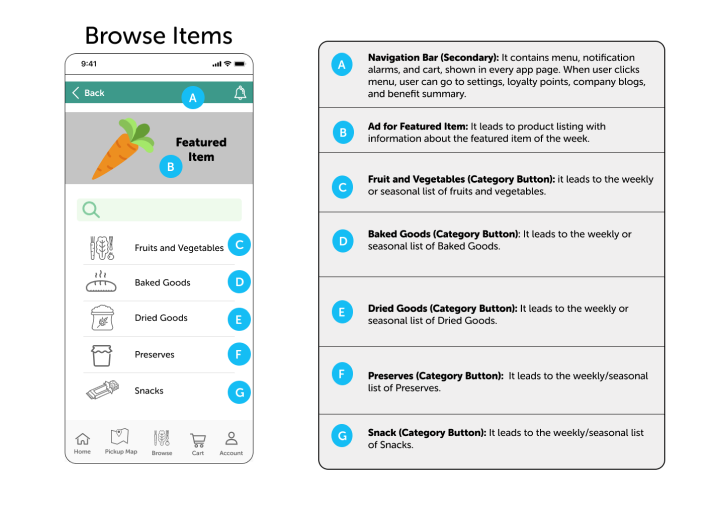
Pictured above is an early sketch representing the Browse Items screen.
Wireframing
These screens give an overview of a user's journey. From left to right: browsing, view cart, checkout, confirming pickup location.

Item Information
- Item is clearly pictured with nutritional information to inform users of the product's nutritional value.
- The location where the product was source is also listed encouraging users to support local farms and food sources.
- For users that do not normally prepare their own foods, suggestions on how to prepare the product are listed.
- Robust navigation to other areas of the app and clear Add to Cart buttons are present on this screen.

Pickup Locations
- Each day, the market will be stationed at various neighborhoods. The user can choose a pickup location that is most convenient for them.
- A scannable map offers the user a complete view of the available pickup locations and times.
- This screen can be accessed after the checkout process or at the beginning of the process in order to set a default pickup location. After an order is completed, the user will always be presented with this screen to confirm their location.
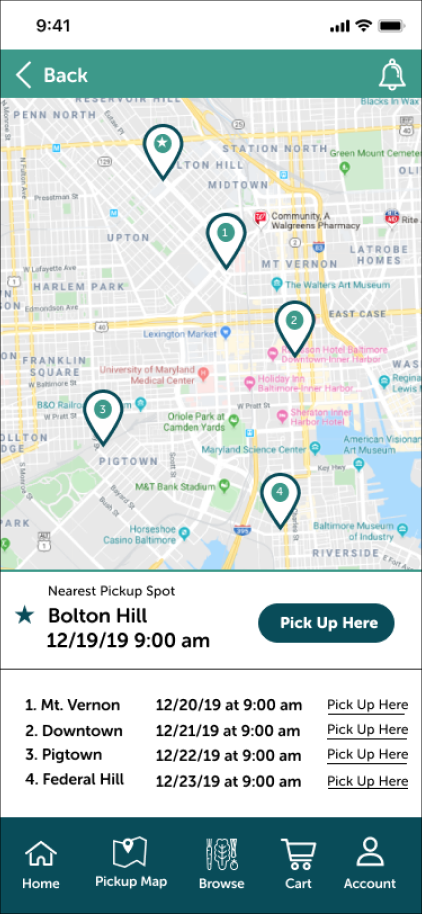
Conclusion
This multidisciplined project was tied together social issues, creating a business model, and wireframing an app through a typical UX Design workflow. I enjoyed working with my teammates to deconstruct the problem at hand and provide a potential solution for our client. The extensive research we did painted a clear picture of our target user and made it easy for us to design with empathy in mind. Personally, I would love to see this service implemented in my neighborhood in the future. Link to Complete Playbook